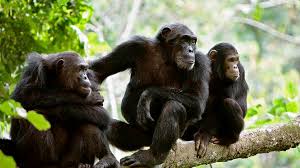- Arusha
- info@naturebaysafari.com
- +255 621 837 693
Arusha National Park
Overview
Arusha National Park is a stunningly diverse and accessible wildlife sanctuary located in the northern part of Tanzania. It is renowned for its varied landscapes, ranging from lush rainforests to open savannas, and is home to a rich diversity of flora and fauna. The park offers visitors a blend of ecosystems, making it a unique destination for wildlife enthusiasts, trekkers, and nature lovers alike. Here’s a comprehensive description of Arusha National Park:
Location and Accessibility
Arusha National Park is situated in the northeast of Tanzania, just a short drive from the bustling city of Arusha, making it one of the most accessible parks in the region. The park lies at the base of Mount Meru, Tanzania’s second-highest mountain, which dominates the skyline. Its proximity to Serengeti and Ngorongoro Crater makes it a convenient stop for tourists on safari circuits in Tanzania.
Size and Terrain
The park spans approximately 137 square kilometers (53 square miles) and features a remarkable diversity of landscapes. The terrain includes the lower slopes of Mount Meru, open savannah plains, dense forests, and alkaline lakes. This range of habitats creates a wide variety of ecosystems, each supporting different species of wildlife and plant life.
Mount Meru: Towering at 4,566 meters (14,980 feet), Mount Meru is the fifth-highest mountain in Africa and an active volcano. Its summit can be reached through a multi-day trekking route, offering hikers the opportunity to explore the mountain's rich biodiversity and stunning scenery.
Ngurdoto Crater: This volcanic crater is one of the key features of the park. The crater’s floor is covered with dense forest, and it’s a great place for spotting wildlife, including buffalo, giraffes, and various bird species.
Momella Lakes: The park is home to seven Momella Lakes, which are often characterized by their striking alkaline waters. These lakes attract a wide range of birdlife, including flamingos and pelicans. The lakes also support hippos and a variety of smaller animals.
Wildlife
Arusha National Park is home to a variety of wildlife, though it is not as densely populated with big game as other Tanzanian parks. It is renowned for its exceptional birdlife and the chance to spot unique animals in a less crowded environment. Some of the key wildlife species found in the park include:
- Giraffes: The park’s population of giraffes is one of its most iconic features.
- Buffaloes: Large herds of buffalo roam the savannah and crater area.
- Zebras and Wildebeest: Both of these grazers are common sights in the park’s open plains.
- Leopards: Though elusive, leopards are found in the forests and on the slopes of Mount Meru.
- Colobus monkeys: These black-and-white primates are commonly spotted in the forested areas of the park.
- Flamingos: Often seen at the Momella Lakes, flamingos are a common and beautiful sight.
While the park has fewer of the "big five" (lion, elephant, leopard, buffalo, and rhinoceros) compared to other Tanzanian parks, it still offers fantastic opportunities for wildlife viewing, especially for those looking to observe animals in a more serene environment.
Activities
Arusha National Park offers a variety of activities for visitors, making it a versatile destination. These activities are designed to take advantage of the park's diverse landscapes:
Safari Game Drives: Enjoy a traditional safari game drive through the park’s savannah and forested areas. Game drives offer a chance to spot many of the park’s animals, including giraffes, zebras, and buffaloes.
Walking Safaris: The park is one of the few places in Tanzania where walking safaris are permitted. Accompanied by an experienced ranger, visitors can explore the park's wilderness on foot, learning about its ecology and spotting wildlife up close.
Trekking Mount Meru: Mount Meru is a popular trekking destination, and visitors can embark on a multi-day hike to the summit. The trek offers a combination of adventure and scenic views, with the opportunity to spot wildlife such as monkeys, buffaloes, and various bird species along the way.
Bird Watching: With over 400 species of birds, Arusha National Park is a paradise for birdwatchers. The diverse habitats support a wide range of birds, including flamingos, pelicans, and the rare violet-backed starling.
Canoeing on Momella Lakes: Canoeing on the lakes is a tranquil way to explore the park. Visitors can paddle near the shorelines of Momella Lakes, getting close to flamingos and observing hippos in their natural habitat.
Climate
Arusha National Park enjoys a temperate climate, with cooler temperatures at higher altitudes and warmer conditions at lower elevations. The rainy season runs from March to May and November to December, while the dry season typically lasts from June to October. The weather is generally pleasant year-round, making it a great destination in any season.
Conservation Efforts
Arusha National Park is a vital area for the protection of wildlife and natural resources. The park’s management is committed to sustainable conservation practices, working to protect its ecosystems and biodiversity. This includes monitoring wildlife populations, preserving native plants, and managing human-wildlife conflict. The park also plays an important role in preserving Mount Meru, an active volcano that forms part of the region's unique geological features.
Cultural and Historical Significance
While Arusha National Park is primarily known for its natural beauty, it also holds historical significance for the indigenous Maasai people who have lived in the region for centuries. The Maasai community continues to have a cultural presence in the area, and visitors may have the opportunity to learn about their traditional customs and practices.
Accommodation
There are several accommodation options available near the park, ranging from budget campsites to more luxurious lodges. Many visitors choose to stay in the nearby town of Arusha or opt for accommodations closer to the park’s entrance, such as:
- Momella Wildlife Lodge: Situated near the park entrance, this lodge offers stunning views of Mount Meru and comfortable accommodations.
- Meru View Lodge: This lodge offers great views of both the park and Mount Meru, as well as easy access to the park’s activities.
- Campsites: For those seeking a more rustic experience, the park has a few designated campsites.
Best Time to Visit
Arusha National Park is accessible year-round, but the best time to visit depends on your interests:
- Wildlife Viewing: The dry season (June to October) is the best time for game drives and wildlife viewing, as animals are easier to spot.
- Trekking Mount Meru: The climbing season typically runs from June to February, avoiding the heavy rains.
- Bird Watching: The wet season (November to April) is the best time for bird watching when migratory birds are in the area.
Conclusion
Arusha National Park may be one of Tanzania's smaller parks, but its diverse landscapes, abundant wildlife, and range of activities make it a worthwhile destination for travelers looking for a more intimate safari experience. Whether you're interested in trekking Mount Meru, taking a walking safari, or simply enjoying the tranquility of the park's lakes and forests, Arusha National Park offers something for everyone. It provides a perfect contrast to the larger, more famous national parks and a chance to experience the natural beauty and wildlife of Tanzania up close.







